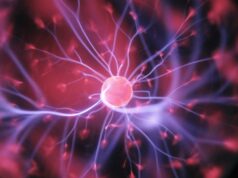 Researchers at the Feinstein Institutes for Medical Research (Manhasset, USA) are microscopically mapping more than 100,000 individual fibres that make up the vagus nerve to determine how they are anatomically connected, and which bodily functions they control, and recently published these findings—along with details of a novel vagus nerve stimulation (VNS) device that can active targeted fibres—in the journal Brain Stimulation.
Researchers at the Feinstein Institutes for Medical Research (Manhasset, USA) are microscopically mapping more than 100,000 individual fibres that make up the vagus nerve to determine how they are anatomically connected, and which bodily functions they control, and recently published these findings—along with details of a novel vagus nerve stimulation (VNS) device that can active targeted fibres—in the journal Brain Stimulation.
The study, led by Stavros Zanos (Feinstein Institutes’ Institute of Bioelectronic Medicine, Manhasset, USA), deployed advanced methods for surgical dissection, imaging and microscopic anatomy to map how vagal fibres are organised inside the vagus nerve in animal models. The team found fibres that connect to the larynx, lung and heart lie in different parts of the nerve. They also discovered that sensory and motor fibres are in separate locations—which are close to the neck and later disappear as the nerve enters the chest cavity.
“To advance the field of bioelectronic medicine and effectiveness of VNS therapies, we must first understand what part of the nerve we are stimulating and what that does to the body,” said Zanos, senior author of the paper. “Through our early mapping and new electrical stimulation vagal nerve cuff, we hope to unlock the potential of VNS to more effectively treat organ-specific diseases.”
The team’s animal model VNS cuff wraps around the vagus nerve and has 10 contacts instead of the standard two used today in clinical VNS devices, according to a Feinstein Institutes press release. By electrically stimulating individual contacts around the nerve, the group showed that nerve fibres can be more selectively activated. For example, by stimulating the contact that lies away from nerve fibres to the larynx and closer to nerve fibres to the lung, they were able to affect lung function with a smaller impact on laryngeal function.
The cuff’s effectiveness shows the ability to home in and select fibres to a single organ of interest while avoiding others. Existing VNS therapies cannot easily target the nerves that engage a specific organ—such as the heart in atrial fibrillation or the lungs in pulmonary hypertension—the release adds.
Frequently, existing VNS therapies produce side-effects from non-targeted organs like voice changes, throat pain and coughing. Even though those effects are not life-threatening, a more selective, targeted approach to VNS could potentially reduce those side-effects and use VNS to deliver improved treatments for organ-specific diseases.
“Despite the importance of the vagus nerve and wide interest in methods to stimulate it, the basic anatomy of this nerve is largely unknown,” said Kevin Tracey, president and CEO of the Feinstein Institutes. “Dr Zanos’ current study provides a new basic foundation for understanding vagus nerve function and structure.”
This current research aided in Zanos and the Feinstein Institutes securing a US$6.7 million grant from the National Institutes of Health (NIH), which will help him and his lab to create a detailed map of the anatomy of the human vagus nerve.













